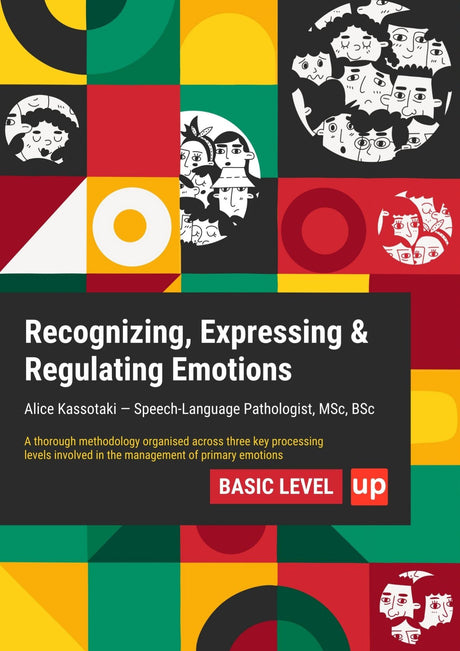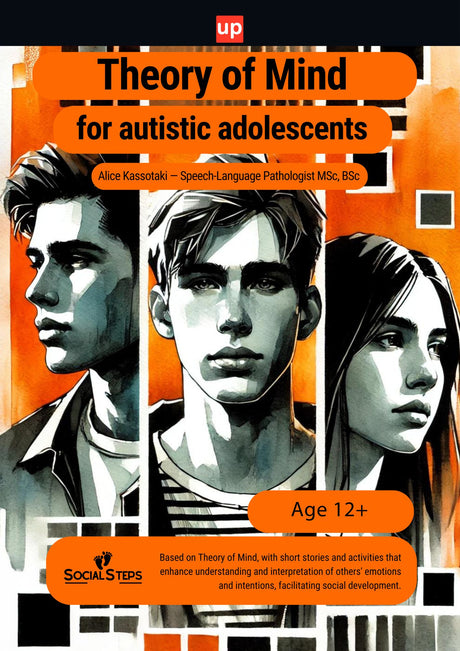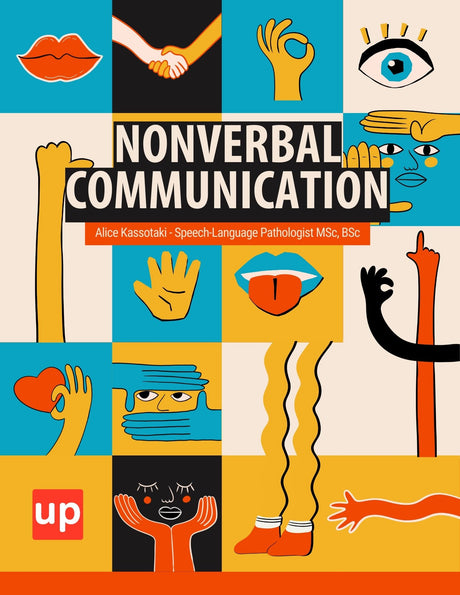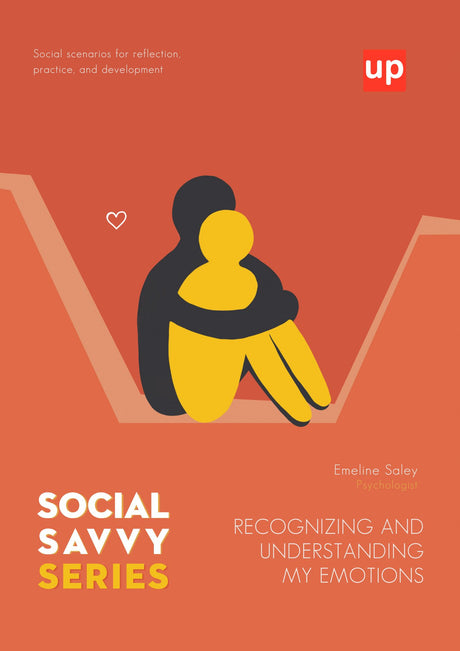Navigating the world of mental health can be complex, especially when behaviors don't fit neatly into well-defined categories. The challenges faced by young people are significant; globally, one in seven 10-19-year-olds experiences a mental disorder, highlighting the urgent need for clear understanding and effective support. Among the more challenging diagnostic areas are Disruptive, Impulse-Control, and Conduct Disorders (DICCDs), a class of conditions marked by difficulties with emotional and behavioral self-control. While specific disorders like Conduct Disorder and Oppositional Defiant Disorder are widely discussed, a significant gray area exists: the "Unspecified" diagnosis. This article explores the landscape of DICCDs, delves into the specific criteria and rationale for an Unspecified Disruptive, Impulse-Control, and Conduct Disorder diagnosis, and examines the therapeutic pathways available for individuals whose behaviors defy easy categorization.
Key Points
- The "Unspecified Disruptive, Impulse-Control, and Conduct Disorder" diagnosis is used when an individual's disruptive behaviors cause significant impairment but do not fully meet the diagnostic criteria for specific disorders like Conduct Disorder or Oppositional Defiant Disorder.
- This diagnosis allows mental health professionals to address complex or atypical behavioral presentations without forcing an inaccurate label, facilitating timely intervention and treatment.
- Effective treatment focuses on improving functioning and managing behaviors through therapies such as Cognitive-Behavioral Therapy, parent management training, and family therapy, emphasizing skill-building and emotional regulation over diagnostic precision.
Understanding the Unspecified Disruptive, Impulse Control and Conduct Disorder Criteria

This group of psychiatric disorders, which are also classified as behavioral disorders, represents a significant challenge for individuals, families, and communities. They are fundamentally characterized by a persistent pattern of violating the basic rights of others and clashing with societal norms or authority figures.
Defining the Broad Category: What Constitutes DICCDs?
The core feature of this disorder class is a breakdown in emotional and behavioral self-control. Unlike many other mental health conditions where the distress is primarily internal, DICCDs manifest in behaviors that are externally visible and often disruptive to others. These actions can range from verbal aggression and defiance to more severe behaviors like physical aggression, property destruction, and theft. These behaviors occur in various settings and may differ in frequency and context depending on the individual's age and environment, which is important for accurate diagnosis. The underlying issue is not simply “bad behavior,” but a genuine impairment in the ability to regulate impulses and emotions.
The Role of the Diagnostic and Statistical Manual (DSM)
The American Psychiatric Association publishes the Diagnostic and Statistical Manual of Mental Disorders (DSM), the authoritative guide used by health providers to diagnose mental health conditions. The DSM-5 organizes these behavior disorders into the “Disruptive, Impulse-Control, and Conduct Disorders” chapter. This classification provides clinicians with specific criteria to differentiate between conditions like Oppositional Defiant Disorder (ODD), characterized by a pattern of angry/irritable mood and defiant behavior, and Conduct Disorder, which involves more severe violations of rules and rights. For a diagnosis, the DSM-5 often requires that at least one criterion or a specific number of criteria be present, depending on the disorder. Clinicians must ensure the required criterion present to establish a formal diagnosis and distinguish between these conditions. Other conditions in this spectrum include Intermittent Explosive Disorder, defined by recurrent aggressive outbursts.
The Spectrum of Disruptive Behaviors: From Everyday Challenges to Clinical Concerns
It is crucial to distinguish between typical childhood or adolescent misbehavior and clinically significant disruptive behavior disorders. The key difference lies in the severity, frequency, persistence, and impact of the behaviors. A clinical diagnosis requires that the behavioral issues cause clinically significant impairment in social, academic, or occupational functioning, substantially interfering with daily life. For example, Oppositional Defiant Disorder affects an estimated 3.3% of children and adolescents, indicating a level of defiance that goes far beyond typical developmental phases.
Deconstructing "Unspecified": The Rationale for Diagnostic Ambiguity
While the DSM provides clear criteria for many disorders, it also includes "unspecified" categories. These are not signs of diagnostic failure but are essential clinical tools that acknowledge the complexity of human behavior.
The DSM's Provision for "Unspecified" Diagnoses
An "Unspecified Disruptive, Impulse-Control, and Conduct Disorder" diagnosis is used when a person's symptoms cause clinically significant distress or impairment but do not meet the full criteria for any specific disorder within the DICCD class. The mental health professional makes this diagnosis when there is insufficient information to make a more specific diagnosis, such as in an emergency room setting, or they may choose not to specify the reason the criteria are not met. This provides a way to acknowledge a problem and begin treatment without forcing a premature or inaccurate label.
When Behaviors Defy Precise Categorization: Clinical Realities
Human behavior does not always conform to textbook descriptions. A child might exhibit significant aggression (a hallmark of Conduct Disorder), chronic irritability (a feature of ODD), or hostile behavior—disruptive actions that may not fit neatly into a specific diagnostic category—but not meet the full symptom count or duration for either. They may also display unique impulse control disorders, like compulsive fire setting or stealing, that are part of a broader, less defined pattern of disruption. In these cases, forcing a specific label could be misleading and might not fully capture the individual’s struggles.
Nuances in Diagnostic Specification: Beyond Definitive Criteria
The "unspecified" diagnosis differs subtly from its "other specified" counterpart. With an "other specified" diagnosis, the clinician documents the specific reason why the presentation does not meet the criteria for a specific disorder. The "unspecified" category offers more flexibility when such specification is not possible or desired. This distinction underscores the importance of clinical judgment in navigating the gray areas of psychiatric disorders.
Clinical Scenarios Resulting in Unspecified DICCD Diagnoses

Several common clinical situations can lead a mental health professional to use an "unspecified" diagnosis. These scenarios highlight the practical challenges of applying standardized criteria to individual lives.
Blurred Lines: Differentiating from Co-occurring Conditions
Symptoms of DICCDs often overlap with other conditions. For instance, the impulsivity seen in Attention-Deficit/Hyperactivity Disorder (ADHD), the irritability of Bipolar Disorder, or the behavioral changes associated with substance use disorders can mimic the features of a primary impulse-control disorder. Mood disorders and substance abuse are also common comorbidities that can complicate the diagnostic process for DICCDs, making it important to consider these factors during assessment. When it’s unclear whether the disruptive behaviors are a separate issue or a symptom of another condition, an “unspecified” diagnosis may be used pending further evaluation.
Subthreshold Symptoms: When Diagnostic Criteria are Partially Met
An individual may exhibit several distressing symptoms of a DICCD but fall just short of the number required for a formal diagnosis. For example, a teenager might engage in serious rule violations and show a lack of empathy, but only display two of the three required criteria for Conduct Disorder in the past year. If these behaviors cause significant impairment at school and home, an "unspecified" diagnosis validates the problem and opens the door to intervention.
Atypical Presentations: Behavioral Patterns Not Explicitly Described
Sometimes, a person’s behavioral issues are clearly disruptive and stem from poor impulse control, yet their specific actions don’t align with any defined disorder. For example, they might display a unique combination of verbal aggression, destroying property, and social withdrawal that collectively causes impairment but doesn’t fit the pattern of ODD, IED, or Conduct Disorder. These atypical presentations may have unique symptom characteristics that do not align with standard diagnostic categories. The “unspecified” category is designed for these atypical but still problematic presentations.
The Developmental Trajectory of Disruptive Behaviors
Behavioral patterns can evolve, especially in children and adolescents. What begins as a collection of “unspecified” disruptive behaviors may, over time, crystallize into a more defined disorder like Conduct Disorder, particularly when there is a repetitive and persistent pattern of violating social norms or the rights of others. It is important to identify conduct disorder prior to age 10, as this distinction helps determine whether the individual has childhood-onset or adolescent-onset type, which can influence prognosis and treatment. Conversely, with effective intervention, these behaviors might resolve without ever meeting the full criteria for a specific disorder. An initial “unspecified” diagnosis allows for observation and treatment without prematurely labeling a developmental stage.
The Clinical Rationale Underpinning an "Unspecified" Diagnosis
The decision to use an "unspecified" diagnosis is not arbitrary; it is a deliberate clinical judgment based on a thorough and nuanced assessment process.
The Art and Science of Assessment for Mental Health Professionals
Diagnosis is both a science, guided by the DSM criteria, and an art, informed by clinical experience. A skilled mental health professional considers not just the checklist of symptoms but also the context, developmental stage, cultural background, and family environment. For example, behaviors like temper tantrums may be developmentally appropriate in young children but could be concerning if they are frequent, intense, or persist into adolescence. This holistic view is essential for understanding the root of the behavioral issues and determining the most appropriate diagnostic classification.
Comprehensive Evaluation: Gathering Data Beyond Standardized Checklists
A proper assessment involves gathering information from multiple sources. This includes detailed interviews with the individual and their family, reports from teachers or employers, and sometimes psychological testing. Clinicians may specifically look for features such as limited prosocial emotions—like lack of remorse, callousness, or shallow affect—when evaluating for conduct disorder and related disorders. This comprehensive approach helps the clinician build a full picture of the person’s functioning and differentiate between transient problems and a persistent psychiatric disorder.
Navigating Diagnostic Ambiguities: Clinical Judgment and Differential Diagnosis
When symptoms are ambiguous or overlapping, the clinician must engage in a process of differential diagnosis, systematically ruling out other potential causes for the behavior. Individuals with ambiguous symptoms may be at greater risk for developing more severe behavioral or mental health problems if not properly identified and treated. This requires deep knowledge of various psychiatric disorders and their presentations. The “unspecified” category is a crucial tool in this process, allowing the clinician to acknowledge the presence of a disorder while continuing to explore its exact nature.
The Scholarly Debate: Categorical vs. Dimensional Frameworks for Behavioral Understanding
The DSM uses a categorical approach, placing disorders in distinct boxes. However, many experts argue for a dimensional framework, which views symptoms on a spectrum of severity. The “unspecified” diagnosis acts as a bridge between these two models. It acknowledges that an individual’s symptoms are clinically significant (categorical) even if they don’t meet the full threshold for a specific box, reflecting a dimensional understanding of impairment. Individuals who do not fit neatly into these categories may be at higher risk for negative outcomes due to delayed or inadequate intervention.
The Impact of "Unspecified" Challenges on Individuals and Their Families

Regardless of the specific label, the presence of disruptive and impulse-control behaviors, including serious violations of rules or societal norms, has a profound impact on an individual’s life and their support system.
The Lived Experience: Frustration, Confusion, and Societal Stigma
For individuals and families, an "unspecified" diagnosis can be both a relief and a source of frustration. While it confirms that the problem is real, the lack of a clear label can feel confusing. Society often stigmatizes behavioral issues, leading to feelings of isolation and shame. This is compounded when families struggle to explain their child's challenges to schools or relatives without a well-known diagnostic term.
Impairment in Educational and Social Functioning
Persistent disruptive behaviors frequently lead to significant problems in school, including disciplinary actions, suspensions, and academic failure. Behaviors such as rule breaking, physical aggression, and verbal aggression can result in disciplinary measures and contribute to social rejection. Socially, these individuals often struggle to form and maintain friendships due to these behaviors or an inability to follow social rules. This can lead to rejection and further entrench feelings of alienation.
Strain on Family Dynamics and Interpersonal Relationships
The constant conflict, defiance, and unpredictability associated with these disorders place immense strain on family relationships. Parents may feel exhausted, helpless, and blamed for their child’s behavior. Sibling relationships can suffer, and the overall family environment can become tense and stressful, creating a cycle of negative interactions. Implementing consistent discipline strategies can help reduce conflict and improve family relationships.
The Potential Progression: From Unspecified to More Clearly Defined Disorders (e.g., Conduct Disorder, Antisocial Personality Disorder)
Without effective intervention, unspecified disruptive behaviors in childhood can escalate. These behaviors may include breaking rules, and over time, they may eventually meet the criteria for Conduct Disorder, which is a serious condition involving a persistent pattern of aggression and rule violation. Conduct Disorder is a significant risk factor for developing Antisocial Personality Disorder in adulthood, a pervasive pattern of disregard for and violation of the rights of others.
Therapeutic Approaches for Unspecified Disruptive and Impulse-Control Behaviors

Effective treatment is available and can significantly improve outcomes, regardless of whether a diagnosis is specified or unspecified. The focus is on addressing the problematic behaviors and building skills. Family therapy is also an effective treatment option, helping families understand disruptive and impulse-control behaviors, improve parenting skills, and strengthen family relationships to support positive change.
Prioritizing Functional Improvement Over Diagnostic Labeling
The ultimate goal of therapy is not to assign a perfect label but to improve the individual's functioning and quality of life. Treatment plans are tailored to the specific behavioral issues, strengths, and needs of the person and their family. The focus is on reducing aggressive behaviors, improving emotional regulation, and fostering positive social interactions.
Foundational Principles of Behavioral Therapy
Behavioral therapy is a cornerstone of treatment for disruptive behavior disorders. These approaches focus on identifying the triggers and consequences of problematic behaviors, such as frequent impulsive anger outbursts, and using techniques like reinforcement for positive behaviors, setting clear limits, and implementing consistent consequences for negative actions. The goal is to reshape behavioral patterns over time.
Cognitive Behavioral Therapy (CBT) for Impulse Control Difficulties
Cognitive-Behavioral Therapy (CBT) is particularly effective for addressing impulse control disorders. CBT helps individuals recognize the thoughts and feelings that precede impulsive or aggressive actions. They learn to challenge distorted thinking, develop problem-solving skills, and practice new coping strategies for managing anger and frustration. This cognitive-behavioral therapy approach empowers them with better emotional and behavioral self-control.
Family-Based Interventions and Parental Guidance
Since these disorders profoundly impact the family system, family-based interventions are often critical. Behaviors such as setting fires, aggression, or defiance may require coordinated family intervention to address underlying issues and prevent escalation. Therapies like Parent Management Training (PMT) equip parents with effective strategies for managing their child’s behavior, improving communication, and strengthening the parent-child relationship. A supportive and structured home environment is essential for lasting change.
Conclusion
The category of Unspecified Disruptive, Impulse-Control, and Conduct Disorder is not a diagnostic dead-end but a vital clinical designation that captures the complex reality of behavioral health. It acknowledges that significant impairment can exist even when symptoms don't perfectly align with the established criteria for conditions like Conduct Disorder or Oppositional Defiant Disorder. This diagnostic flexibility allows health providers to validate an individual's struggles and initiate crucial support without being constrained by rigid categorical boxes.
For families and individuals navigating these challenges, the key takeaway is that the focus should always be on function over a precise label. The presence of persistent aggressive behaviors, poor impulse control, and conflict with authority warrants professional evaluation. Through comprehensive assessment and evidence-based treatments like behavioral therapy and Cognitive-Behavioral Therapy (CBT), it is possible to build skills, improve emotional and behavioral self-control, and foster healthier relationships. If you or someone you know is struggling with these behavioral issues, the most important step is to consult a qualified mental health professional to develop a personalized path toward improvement and well-being.
Frequently Asked Questions
What does "unspecified disruptive impulse control and conduct disorder" mean?
This diagnosis is used when an individual exhibits disruptive behaviors that cause significant impairment but do not fully meet the criteria for specific disorders like Conduct Disorder or Oppositional Defiant Disorder. It allows clinicians to address problematic behaviors without forcing an inaccurate or premature label.
How is an unspecified diagnosis different from other specified disorders?
An "other specified" diagnosis includes a clear explanation of why the individual's symptoms do not meet full criteria for a specific disorder, whereas an "unspecified" diagnosis is used when such specification is not possible or desired, offering more diagnostic flexibility.
What types of behaviors might lead to an unspecified diagnosis?
Behaviors can include aggression, defiance, property destruction, or impulsivity that are disruptive and impair functioning but do not meet the full symptom count or duration required for a specific disorder diagnosis.
Can an unspecified disruptive impulse control and conduct disorder diagnosis change over time?
Yes, behavioral patterns can evolve. An unspecified diagnosis may later develop into a more defined disorder like Conduct Disorder or improve with intervention, highlighting the importance of ongoing assessment and treatment.
What treatment options are available for individuals with this diagnosis?
Treatment typically focuses on improving functioning through therapies such as Cognitive-Behavioral Therapy (CBT), parent management training, family therapy, and behavioral interventions aimed at emotional regulation and skill-building.
How can families support a child with unspecified disruptive behaviors?
Families can benefit from parent management training and family therapy, which teach effective strategies for consistent discipline, communication, and creating a supportive home environment to reduce conflict and improve relationships.
When should someone seek professional help for disruptive behaviors?
If disruptive behaviors cause significant distress, impair social, academic, or occupational functioning, or persist over a lengthy period, it is important to consult a qualified mental health professional for assessment and intervention.
Original content from the Upbility writing team. Reproducing this article, in whole or in part, without credit to the publisher is prohibited.
References
- Luna, R. E. (2024). Disruptive, Impulse-Control, and Conduct Disorders. UCLA Semel Institute for Neuroscience and Human Behavior.
- National Institute of Mental Health. (2023). Disruptive Behavior Disorders. Retrieved from https://www.nimh.nih.gov/health/topics/disruptive-behavior-disorders
- Kevin William Grant. (2023). Other Specified Disruptive, Impulse-Control, and Conduct Disorders. Retrieved from https://www.kevinwgrant.com/blog/item/other-specified-disruptive-impulse-control-and-conduct-disorders
- Nationwide Children's Hospital. (2023). Disruptive Behavior Disorders. Retrieved from https://www.nationwidechildrens.org/conditions/disruptive-behavior-disorders
- Psychiatry.org. (2024). What are Disruptive, Impulse Control and Conduct Disorders? Retrieved from https://www.psychiatry.org/patients-families/disruptive-impulse-control-and-conduct-disorders/what-are-disruptive-impulse-control-and-conduct
- National Center for Biotechnology Information. (2023). DSM-IV to DSM-5 Conduct Disorder Comparison. Retrieved from https://www.ncbi.nlm.nih.gov/books/NBK519712/table/ch3.t13
- Pediatric Oncall. (2023). Conduct Disorder - DSM-5 Criteria. Retrieved from https://www.pediatriconcall.com/calculators/dsm-5-conduct-disorder









